Search Result
Results for "
flavoring
" in MedChemExpress (MCE) Product Catalog:
31
Biochemical Assay Reagents
11
Isotope-Labeled Compounds
| Cat. No. |
Product Name |
Target |
Research Areas |
Chemical Structure |
-
- HY-W012835
-
|
4-Methoxytoluene
|
Biochemical Assay Reagents
|
Others
|
|
4-Methylanisole (4-Methoxytoluene) is food flavoring agent and can be naturally found in Ylang Ylang fragrance oil .
|
-
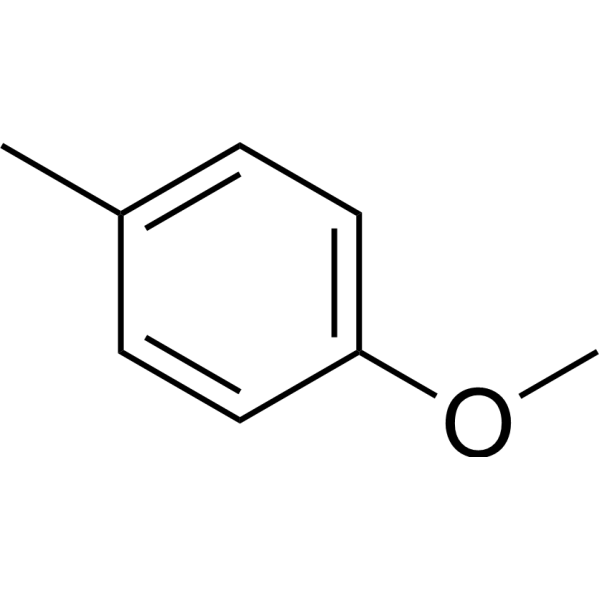
-
- HY-108943
-
|
|
Others
|
Others
|
|
Sabinene is an naturally occurring bicyclic monoterpene which can be used as flavorings, perfume additives, fine chemicals, and advanced biofuels. Sabinene is also an orally active compound to attenuates skeletal muscle atrophy and regulates ROS-mediated MAPK/MuRF-1 pathways .
|
-
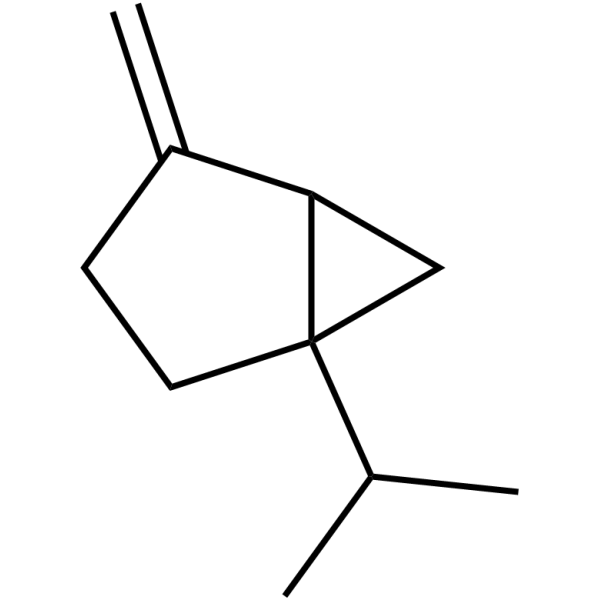
-
- HY-W020014
-
-
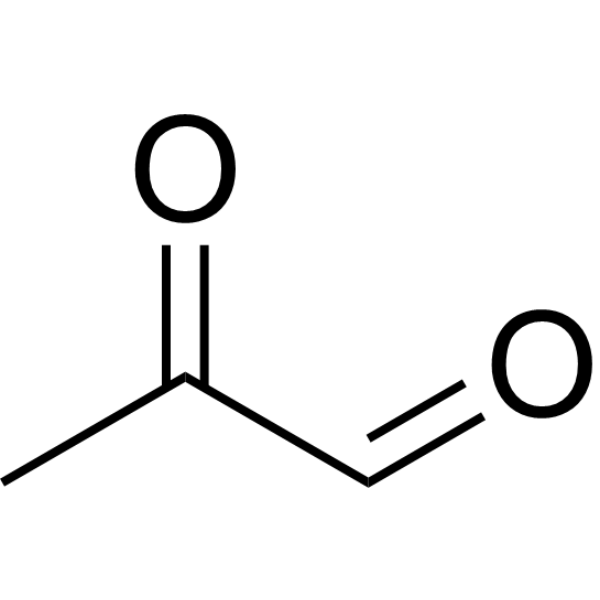
-
- HY-B0940
-
|
|
Others
|
Others
|
|
Ethylvanillin is a flavoring that is three times more potent than Vanillin and is used in the production of chocolate.
|
-
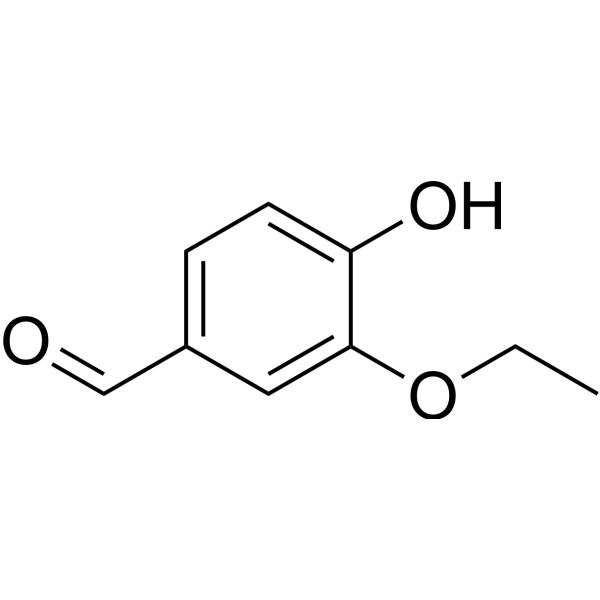
-
- HY-Y0836S1
-
|
Diethyl Butanedioate-d4
|
Isotope-Labeled Compounds
|
Metabolic Disease
|
|
Diethyl succinate-d4 is the deuterium labeled Diethyl succinate[1]. Diethyl succinate (Diethyl Butanedioate) is used at physiological pH and crosses biological membranes, incorporates into cells in tissue culture and is metabolized by the TCA cycle. Diethyl succinate is known to be non-toxic and used in fragrances and flavoring[2].
|
-

-
- HY-Y0836S
-
|
1,4-Diethyl butanedioate-1,2,3,4-13C4
|
Isotope-Labeled Compounds
|
Metabolic Disease
|
|
Diethyl succinate- 13C4 is the 13C labeled Diethyl succinate[1]. Diethyl succinate (Diethyl Butanedioate) is used at physiological pH and crosses biological membranes, incorporates into cells in tissue culture and is metabolized by the TCA cycle. Diethyl succinate is known to be non-toxic and used in fragrances and flavoring[2].
|
-

-
- HY-N2067
-
|
p-(Hydroxymethyl)guaiacol
|
Apoptosis
|
Others
|
|
Vanillyl alcohol (p-(Hydroxymethyl)guaiacol), derived from vanillin, is a phenolic alcohol and is used as a flavoring agent in foods and beverages .
|
-

-
- HY-B1431
-
|
Butyl parahydroxybenzoate; Butyl paraben; Butyl 4-hydroxybenzoate
|
Bacterial
Endogenous Metabolite
DNA/RNA Synthesis
|
Infection
|
|
Butylparaben is an organic compound that has proven to be a very successful antimicrobial preservative in cosmetics, can also be used in active molecule suspensions, and as a food flavoring additive .
|
-
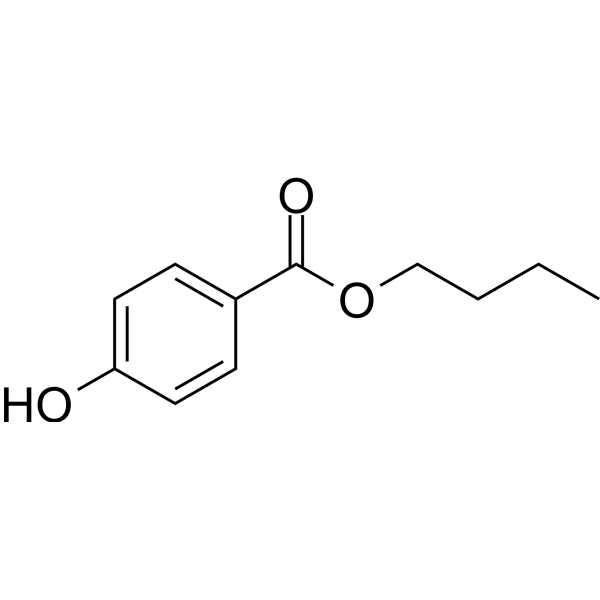
-
- HY-N1426
-
|
Frambione; 4-(4-Hydroxyphenyl)-2-butanone
|
PPAR
|
Cardiovascular Disease
Metabolic Disease
|
|
Raspberry ketone is a major aromatic compound of red raspberry, widely used as a fragrance in cosmetics and as a flavoring agent in foodstuff; also shows PPAR-α agonistic activity.
|
-
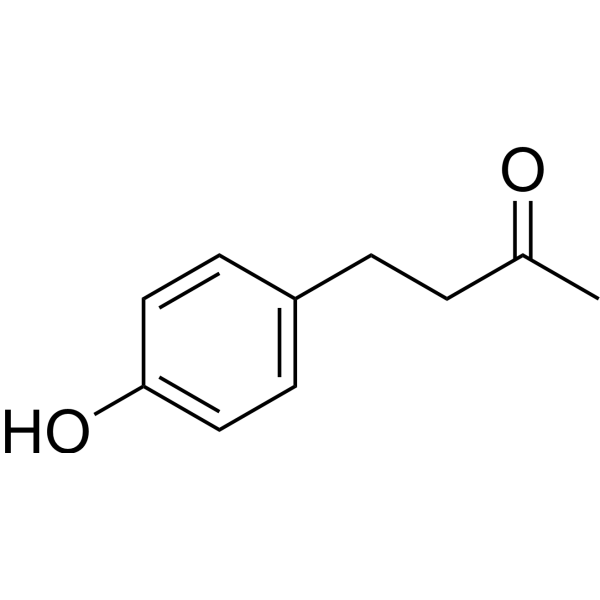
-
- HY-W015307
-
|
|
Biochemical Assay Reagents
|
Others
|
|
4-Ethyloctanoic acid is a natural compound first isolated from Saussurea lappa Clarke, widely used as a safe flavoring compound and acts as food additive .
|
-
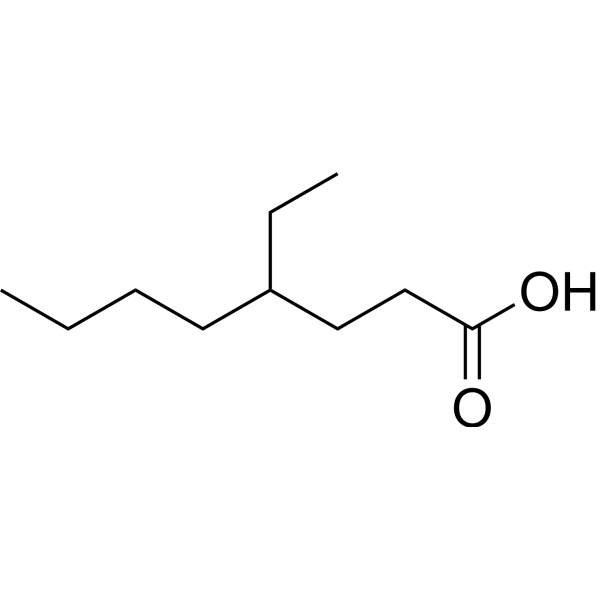
-
- HY-B0940R
-
|
|
Others
|
Others
|
|
Ethylvanillin (Standard) is the analytical standard of Ethylvanillin. This product is intended for research and analytical applications. Ethylvanillin is a flavoring that is three times more potent than Vanillin and is used in the production of chocolate.
|
-
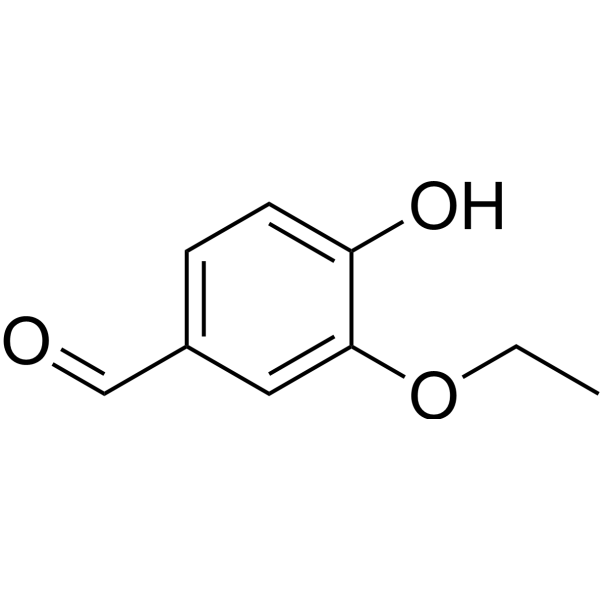
-
- HY-N0708
-
-
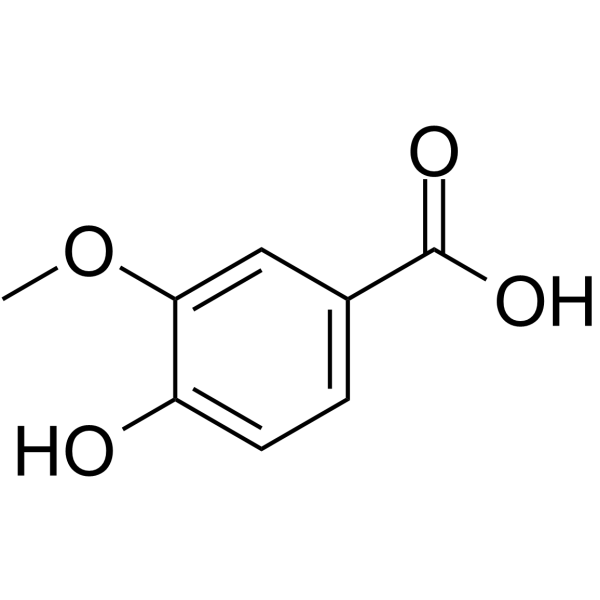
-
- HY-W016976
-
|
Prop-2-en-1-yl heptanoate
|
Biochemical Assay Reagents
|
Others
|
|
Allyl heptanoate is an ester that is formed by the esterification of medium-chain fatty acids, heptanoic acid and allyl alcohol. The compound has a fruity smell and is commonly used as a flavoring in foods such as baked goods, candy and beverages.
|
-

-
- HY-W010553
-
|
|
Others
|
Others
|
|
2,5-Dimethyl-3(2H)-furanone is a flavouring substance without genotoxicity .
|
-

-
- HY-B1431S
-
|
Butyl parahydroxybenzoate-d4; Butyl paraben-d4; Butyl 4-hydroxybenzoate-d4
|
Isotope-Labeled Compounds
Bacterial
Endogenous Metabolite
|
Infection
|
|
Butylparaben-d4 is the deuterium labeled Butylparaben. Butylparaben is an organic compound, has proven to be a highly successful antimicrobial preservative in cosmetics, also used in medication suspensions, and as a flavoring additive in food.
|
-
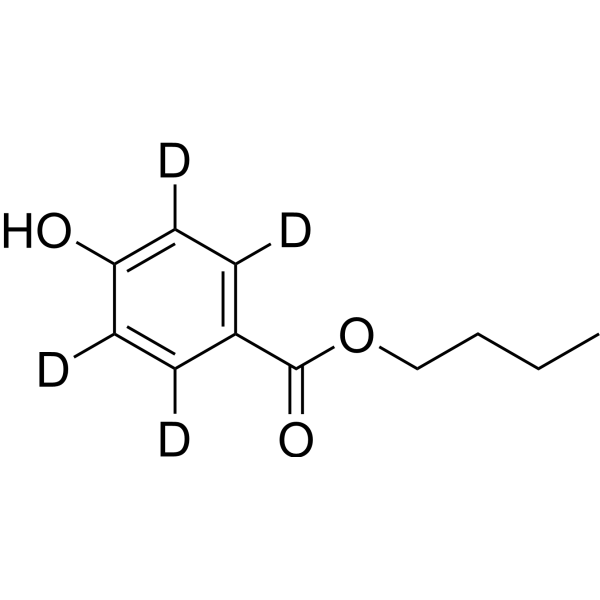
-
- HY-W016172
-
|
|
Biochemical Assay Reagents
|
Others
|
|
Methyl decanoate is a class of esters consisting of medium-chain fatty acids, capric acid, esterified with methanol. The compound has a fruity smell and is commonly used as a flavoring in foods such as baked goods, candy and beverages.
|
-
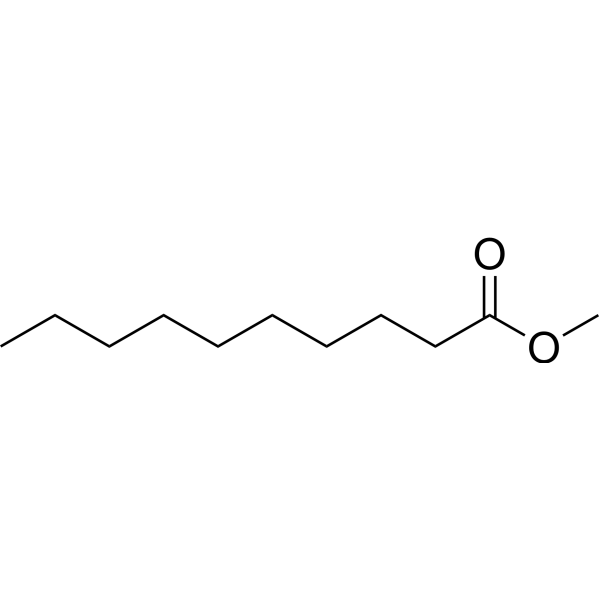
-
- HY-Y0836
-
|
Diethyl Butanedioate
|
|
|
|
Diethyl succinate (Diethyl Butanedioate) is used at physiological pH and crosses biological membranes, incorporates into cells in tissue culture and is metabolized by the TCA cycle. Diethyl succinate is known to be non-toxic and used in fragrances and flavoring .
|
-
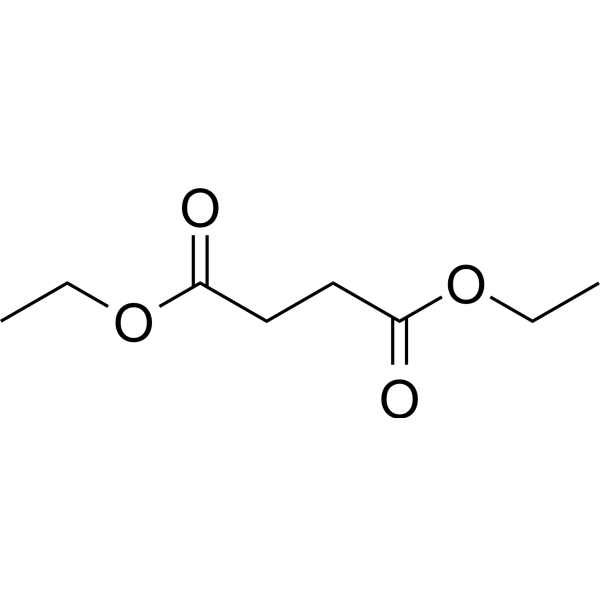
-
- HY-B1431S1
-
|
Butyl parahydroxybenzoate-13C6; Butyl paraben-13C6; Butyl 4-hydroxybenzoate-13C6
|
Bacterial
Endogenous Metabolite
|
Infection
|
|
Butylparaben- 13C6 is the 13C labeled Butylparaben[1]. Butylparaben is an organic compound, has proven to be a highly successful antimicrobial preservative in cosmetics, also used in medication suspensions, and as a flavoring additive in food.
|
-

-
- HY-W009708
-
|
|
Others
|
Others
|
|
Bis(2-methyl-3-furyl)disulfide, compound (2), is intended to provide a flavoring compound to enhance a natural feeling, a fresh feeling and a milk-rich feeling of a milk-related product .
|
-
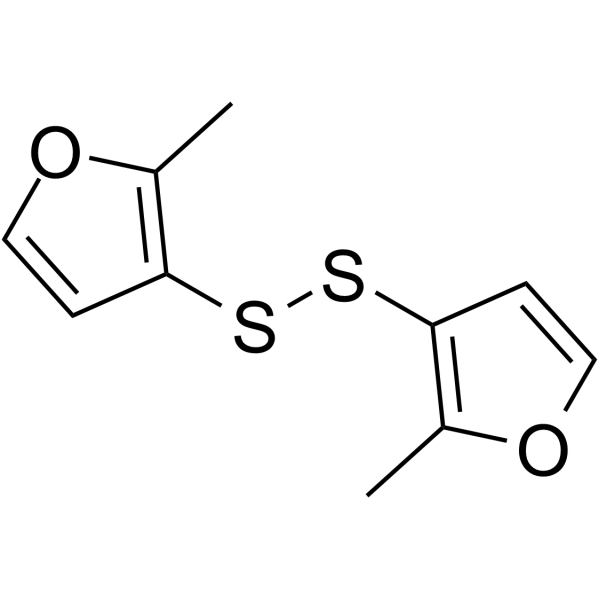
-
- HY-W012835S2
-
|
4-Methoxytoluene-13C
|
Isotope-Labeled Compounds
|
Others
|
|
4-Methylanisole- 13C is the 13C-labeled 4-Methylanisole. 4-Methylanisole (4-Methoxytoluene) is food flavoring agent and can be naturally found in Ylang Ylang fragrance oil[1].
|
-
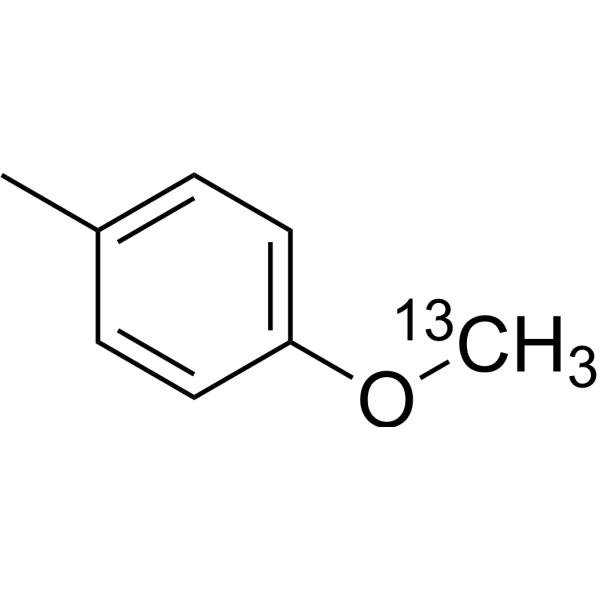
-
- HY-W022036
-
|
Guaethol; Guethol; NSC 180
|
Biochemical Assay Reagents
|
Others
|
|
2-Ethoxyphenol, also known as guaiacol ethyl ether, consists of a phenolic ring and an ethoxy group connected to the 2-position. The compound has a sweet, smoky flavor and is commonly used as a flavoring in foods such as baked goods, candy and beverages.
|
-
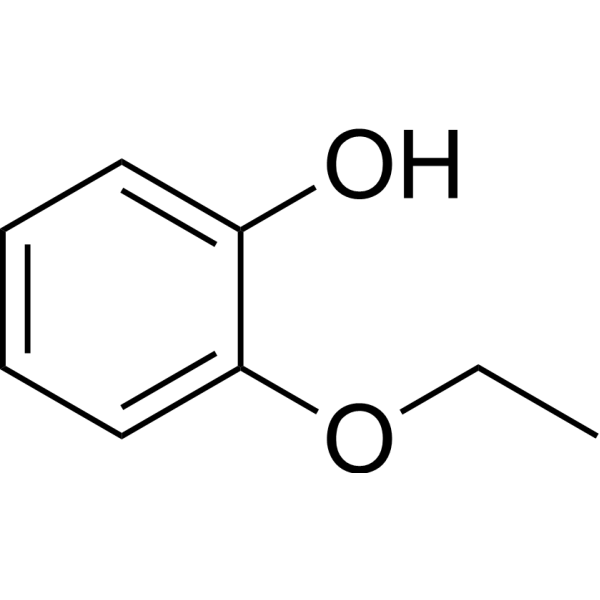
-
- HY-141610
-
|
Methyl enanthate
|
Biochemical Assay Reagents
|
Others
|
|
Methyl heptanoate, commonly used as a flavoring and fragrance ingredient in the food and cosmetic industries, Methyl heptanoate is also used as a solvent for various substances, including resins, oils and waxes, in addition, it has been studied for its potential as a biofuel and polymer production application.
|
-
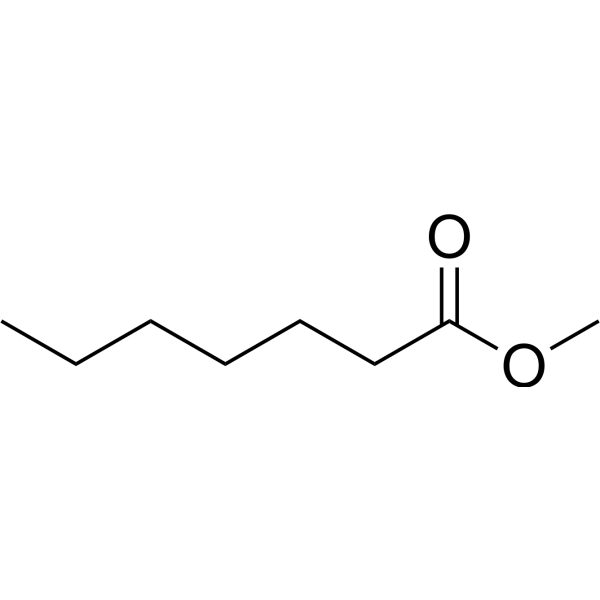
-
- HY-21226
-
|
|
|
|
|
Levoglucosenone Levoglucosenone has unique chemical properties that make it an important intermediate in the production of a wide variety of chemicals, including pharmaceuticals, fragrances and flavorings. Due to its ability to dissolve polar and non-polar compounds, it can also be used as a solvent or fuel additive.
|
-
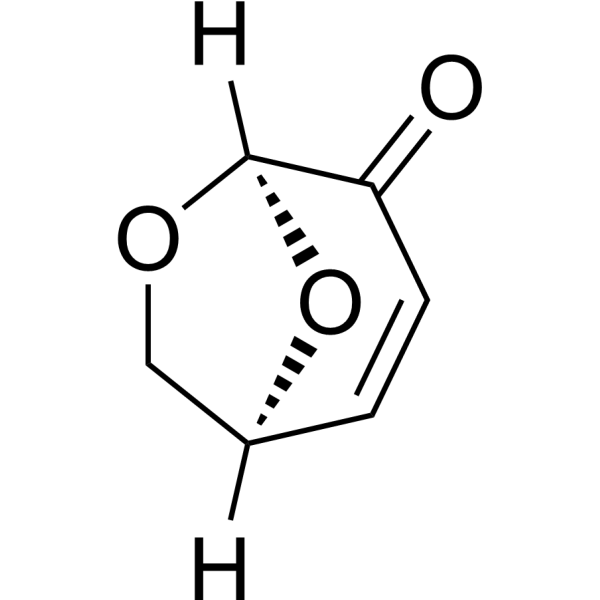
-
- HY-W014884
-
|
Decanoic Acid Ethyl Ester
|
Biochemical Assay Reagents
|
Others
|
|
Ethyl decanoate is an organic compound commonly used as a flavoring and food additive. It can be used to prepare flavors and food seasonings with various flavors, and is widely used in food, flavors and cosmetics. In addition, this compound is also used as a substrate or intermediate in some biochemical reactions.
|
-
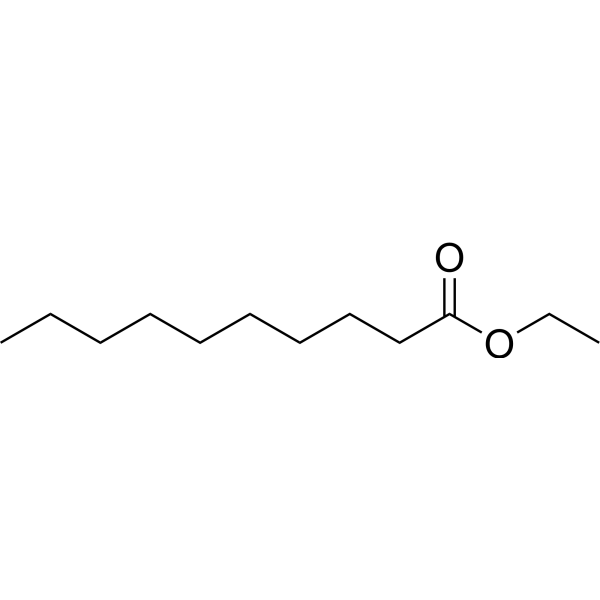
-
- HY-W012835S
-
|
4-Methoxytoluene-d4
|
Isotope-Labeled Compounds
|
Others
|
|
4-Methylanisole-d4 is the deuterium labeled 4-Methylanisole[1]. 4-Methylanisole (4-Methoxytoluene) is food flavoring agent and can be naturally found in Ylang Ylang fragrance oil[2].
|
-

-
- HY-W012835S1
-
|
4-Methoxytoluene-d3
|
Virus Protease
|
Others
|
|
4-Methylanisole-d3 is the deuterium labeled 4-Methylanisole[1]. 4-Methylanisole (4-Methoxytoluene) is food flavoring agent and can be naturally found in Ylang Ylang fragrance oil[2].
|
-
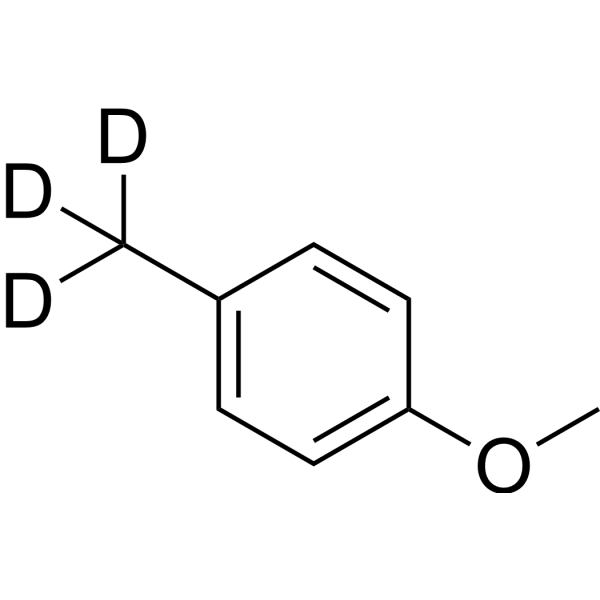
-
- HY-W012835S3
-
|
4-Methoxytoluene-d7
|
Isotope-Labeled Compounds
|
Others
|
|
4-Methylanisole-d7 is the deuterium labeled 4-Methylanisole[1]. 4-Methylanisole (4-Methoxytoluene) is food flavoring agent and can be naturally found in Ylang Ylang fragrance oil[2].
|
-
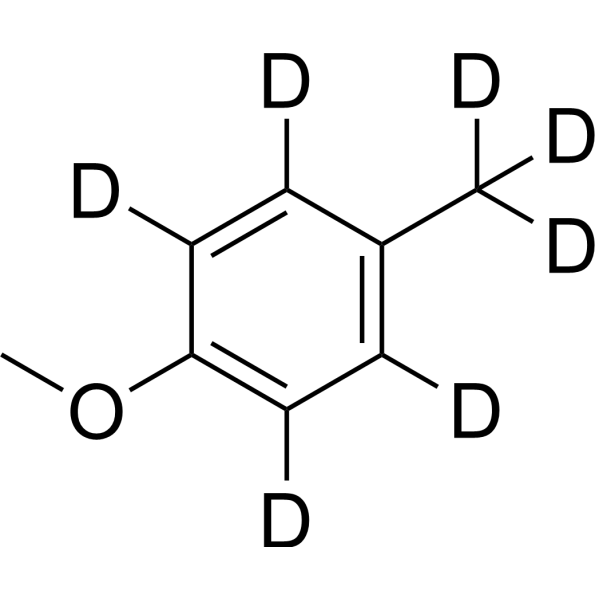
-
- HY-W012835S4
-
|
4-Methoxytoluene-d7
|
Isotope-Labeled Compounds
|
Others
|
|
4-Methylanisole-d7-1 is the deuterium labeled 4-Methylanisole[1]. 4-Methylanisole (4-Methoxytoluene) is food flavoring agent and can be naturally found in Ylang Ylang fragrance oil[2].
|
-
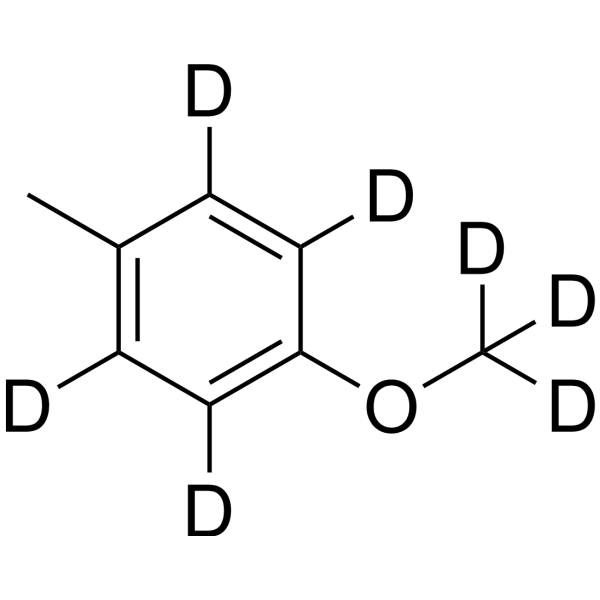
-
- HY-W009684
-
|
Ethyl dodecanoate
|
Biochemical Assay Reagents
|
Others
|
|
Ethyl Laurate is an organic compound commonly used as a flavoring and food additive. It can be used to make fruit, mint and sweet flavors, and is widely used in some food processing and cosmetic production. In addition, this compound is also used as a reagent and intermediate in some organic synthesis reactions.
|
-
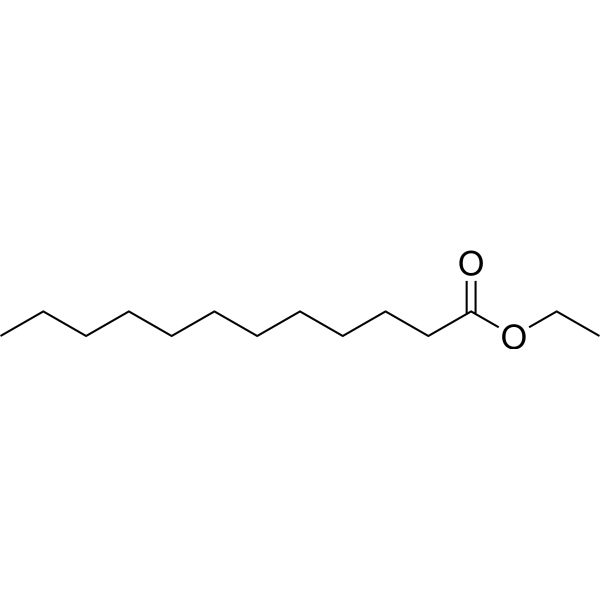
-
- HY-W016145
-
|
|
Apoptosis
|
Metabolic Disease
Cancer
|
|
L-Glutamic acid monosodium hydrate is a nutritional additive and flavoring agent. L-Glutamic acid monosodium hydrate can reduce obesity and induce metabolic disorders associated with oxidative stress. L-Glutamic acid monosodium hydrate induces oxidative stress,DNA damage and apoptosis in the liver and brain tissues of mice .
|
-
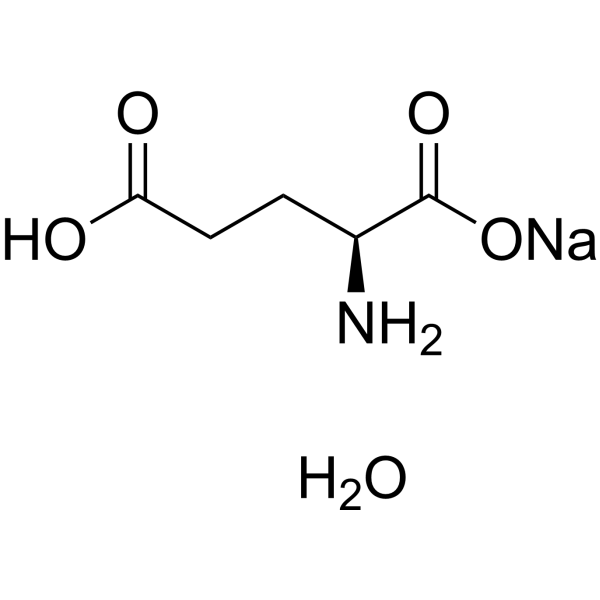
-
- HY-Y0543
-
|
|
|
|
|
5-Methylfurfural is a naturally occurring substance, found in cigarette smoke condensate, licorice essential oil, stored dehydrated orange powder, baked potato flour, volatile compounds of roast beef, aroma concentrate of sponge cake. bread and in coffee, tea and cocoa . A flavoring agent.
|
-
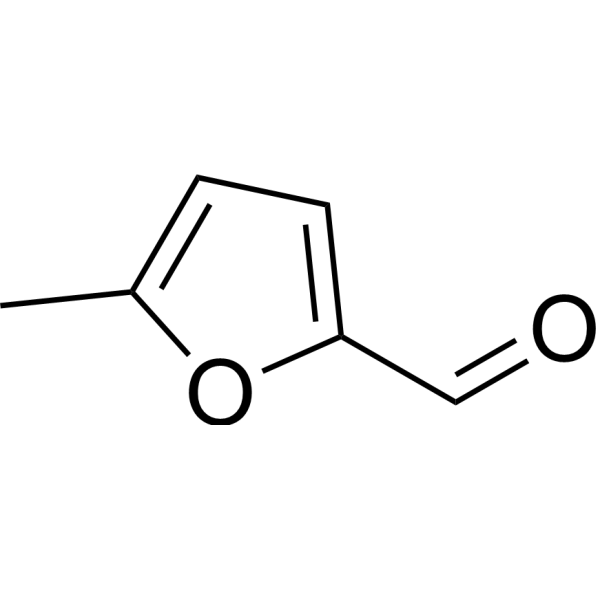
-
- HY-W127330
-
|
|
Biochemical Assay Reagents
|
Others
|
|
Butyl Laurate is an ester compound with a fruity odor commonly used as a flavoring agent in the food and beverage industry. In addition, it is used as a solvent, plasticizer or lubricant in various industrial applications. Its unique chemical properties make it an important ingredient in a variety of commercial products, including cosmetics, personal care products and cleaners.
|
-

-
- HY-Y0949
-
|
Methyl furan-2-carboxylate
|
|
|
|
Methyl 2-furoate (Methyl furan-2-carboxylate) is a building block in chemical synthesis. A flavoring agent in food. Found in cranberries, guava fruits, raisins and other fruits. Also present in baked potato, roasted filberts, roasted peanut, tomatoes, coffee, cocoa, okra, etc.
|
-

-
- HY-W012995
-
|
|
Biochemical Assay Reagents
|
Others
|
|
5-Hexen-1-ol, is an aromatic substance with aromas similar to substances such as herbs, tea and citrus. Therefore, it is usually used in the food, fragrance and perfume industries, and is widely used in the preparation of various food flavors, fragrances, taste flavoring agents, essential oils and cosmetics and other products.
|
-

-
- HY-W018829
-
|
Undecylenic Aldehyde
|
Biochemical Assay Reagents
|
Others
|
|
10-Undecenal consists of an 11-carbon chain with a double bond between the 9th and 10th carbon atoms and an aldehyde group attached to the 1st carbon atom. This compound has a pungent or fatty smell and is commonly used as a flavoring commodity in foods such as bakery, confectionary and beverages.
|
-

-
- HY-W088501
-
|
|
Biochemical Assay Reagents
|
Others
|
|
(E)-Pent-3-enoic acidIt is an unsaturated carboxylic acid. (E)-Pent-3-enoic acidAs a starting material for various chemical reactions including esterification, oxidation and reduction. (E)-Pent-3-enoic acidIt has potential use as a flavoring agent in the food industry.
|
-
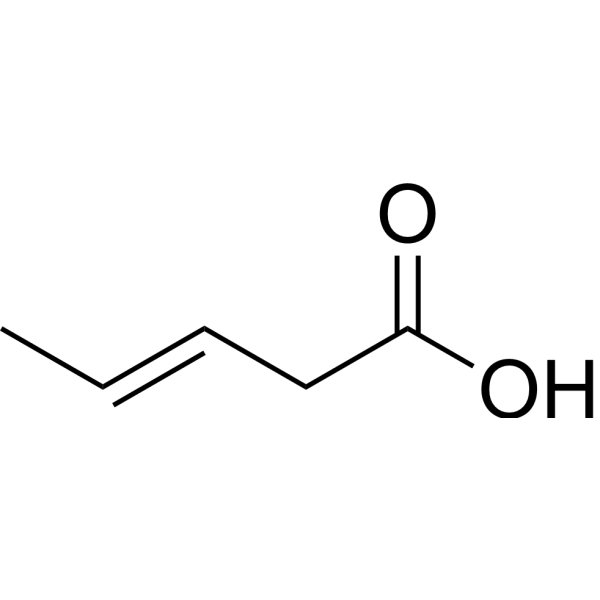
-
- HY-W099750
-
|
Methyl Valerylacetate
|
Biochemical Assay Reagents
|
Others
|
|
Methyl 3-oxoheptanoate is the methyl ester of the organic compound 3-oxoheptanoate. It has a fruity smell and taste. Methyl 3-oxoheptanoate is widely used as a flavoring agent and fragrance in the food and fragrance industry for its pleasant aroma. It is also used as an intermediate in the synthesis of other organic compounds such as pharmaceuticals, agrochemicals, and polymers.
|
-
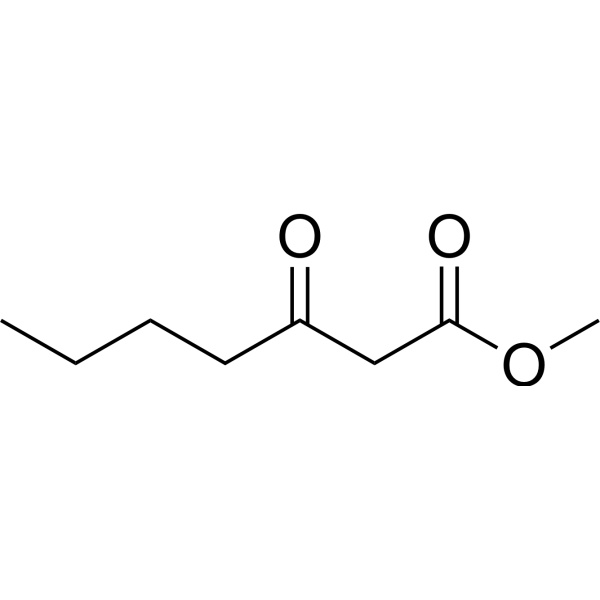
-
- HY-N0420
-
|
Wormwood acid
|
Endogenous Metabolite
|
Neurological Disease
|
|
Succinic acid is an anti-anxiety agent with oral activity. Disodium succinate is the salt form of Succinic acid. Succinic acid is an intermediate product of the tricarboxylic acid cycle. Succinic acid is an important platform chemical. Succinic acid can be used as surfactant, additive, ion chelating agent, flavoring agent and other applications in chemical, pharmaceutical and food fields .
|
-
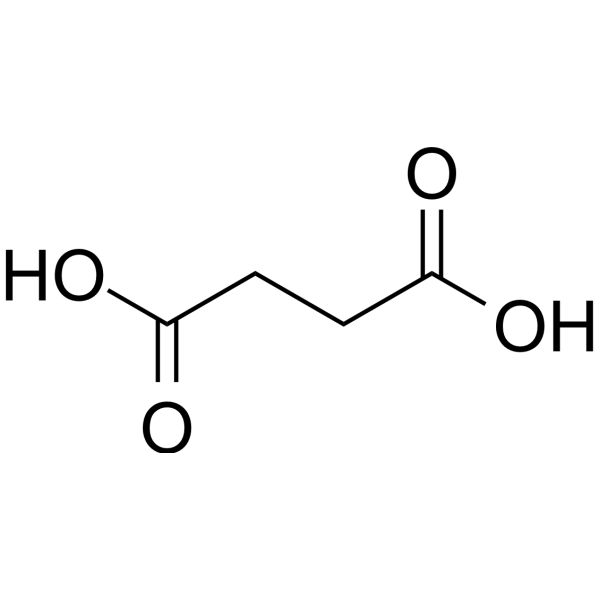
-
- HY-Y0293
-
|
L-(+)-Tartaric acid
|
|
|
|
L-tartaric acid (L-(+) -tartaric acid) is an orally active weak organic acid that can be isolated from grapes. L-Tartaric acid has vasodilatory and antihypertensive effects. L-Tartaric acid can be used as flavorings and antioxidants in a range of foods and beverages. L-Tartaric acid can be used in laser frequency doubling and optical limiting applications .
|
-
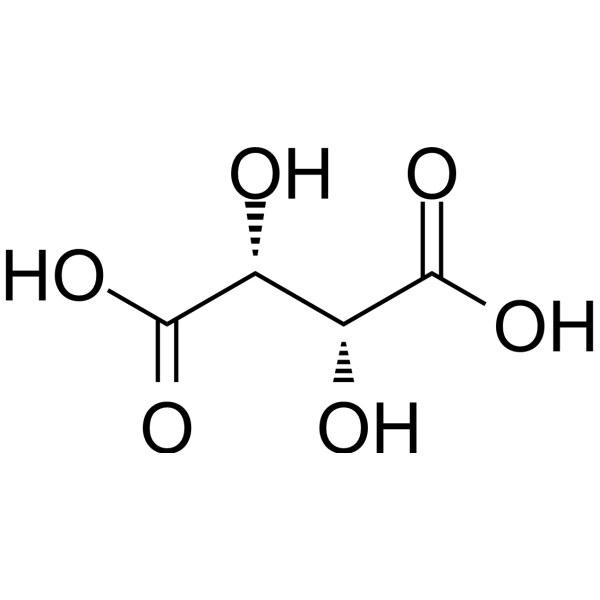
-
- HY-Y0189
-
|
Salicylic acid methyl ester
|
COX
|
Inflammation/Immunology
|
|
Methyl Salicylate (Wintergreen oil) is a topical analgesic and anti-inflammatory agent. Also used as a pesticide, a denaturant, a fragrance ingredient, and a flavoring agent in food and tobacco products . A systemic acquired resistance (SAR) signal in tobacco . A topical nonsteroidal anti-inflammatory agent (NSAID). Methyl salicylate lactoside is a COX inhibitor .
|
-
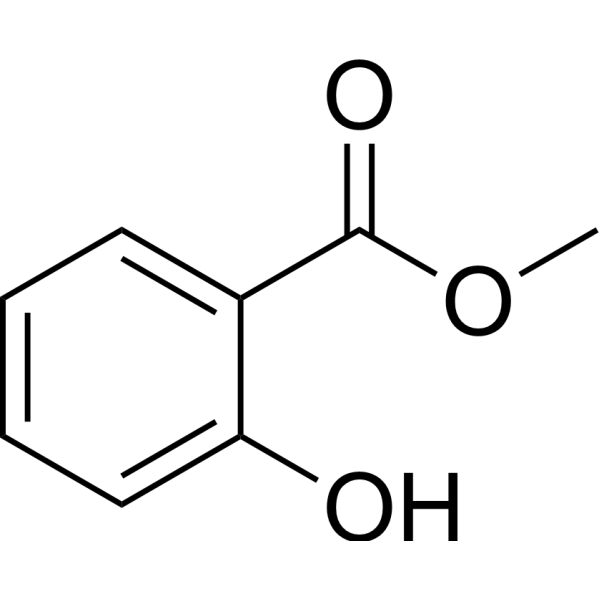
-
- HY-W068214
-
|
Methyl-10-undecenoate
|
Biochemical Assay Reagents
|
Others
|
|
Methyl undec-10-enoate, which is an ester formed by the condensation of methanol and undec-10-enoic acid, is commonly used as a flavoring and fragrance in the food and cosmetic industries due to its sweet fruity smell and taste , in addition, its potential use in biofuel production and as a starting material for the synthesis of various organic compounds was investigated.
|
-

-
- HY-W012998
-
|
|
Others
|
Others
|
|
2,3-Pentanedione is a common constituent of synthetic flavorings and is used to impart a butter, strawberry, caramel, fruit, rum, or cheese flavor in beverages, ice cream, candy, baked goods, gelatins, and puddings. 2,3-Pentanedione also occurs naturally as a fermentation product in beer, wine, and yogurt and is releasedduring roasting of coffee beans .
|
-

-
- HY-W015308
-
|
Pelargonic acid methyl ester
|
Biochemical Assay Reagents
Endogenous Metabolite
|
Others
|
|
Methyl nonanoate is an ester compound obtained by the reaction of methanol and nonanoic acid. It has a fruity aroma and is commonly used as a flavoring agent in a variety of foods such as baked goods, confectionary and beverages. Methyl nonanoate is also used as a fragrance ingredient in the manufacture of perfume, cologne and personal care products. Furthermore, it has applications in industrial settings, for example in the production of solvents, resins and plasticizers.
|
-
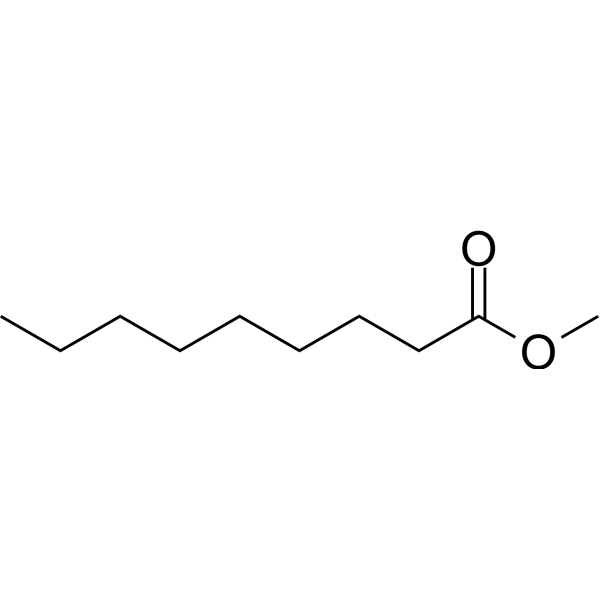
-
- HY-W068700
-
|
|
Biochemical Assay Reagents
|
Others
|
|
Methyl sorbate, which is an ester formed by the condensation of methanol and hexa-2,4-dienoic acid, is commonly used as a flavoring agent and fragrance in the food and cosmetic industries due to its fruity, floral, and taste, and in addition , it has also been investigated for its potential use as a starting material in the synthesis of various organic compounds, including pharmaceuticals, agrochemicals, and polymers.
|
-

-
- HY-D0850
-
|
Sodium tartrate dibasic dihydrate; Sodium tartrate dihydrate
|
Phosphatase
Endogenous Metabolite
|
Cardiovascular Disease
|
|
Tartaric acid disodium dehydrate (L-(+) -tartaric acid) is an orally active weak organic acid that can be isolated from grapes. Tartaric acid disodium dehydrate has vasodilatory and antihypertensive effects. Tartaric acid disodium dehydrate can be used as flavorings and antioxidants in a range of foods and beverages. Tartaric acid disodium dehydrate can be used in laser frequency doubling and optical limiting applications .
|
-

-
- HY-W015410
-
|
|
Endogenous Metabolite
|
Inflammation/Immunology
|
|
Disodium succinate is an anti-anxiety agent with oral activity. Disodium succinate is the salt form of Succinic acid. Disodium succinate is an intermediate product of the tricarboxylic acid cycle. Disodium succinate is an important platform chemical. Disodium succinate can be used as surfactant, additive, ion chelating agent, flavoring agent and other applications in chemical, pharmaceutical and food fields .
|
-
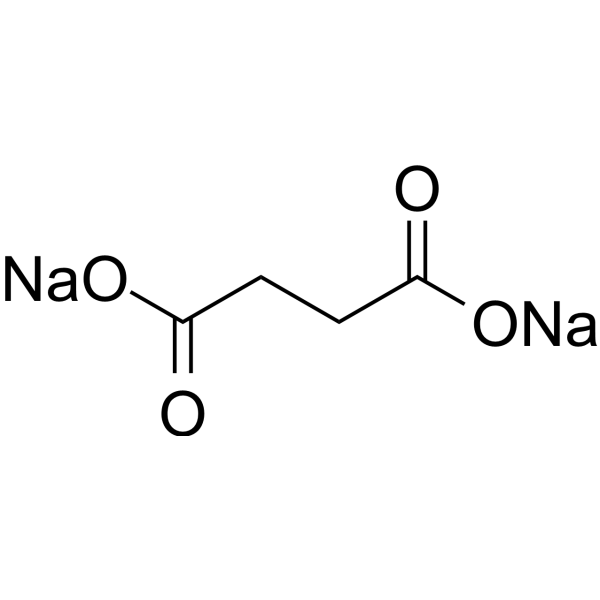
-
- HY-W109973
-
|
L-(+)-Tartaric acid diammonium
|
Endogenous Metabolite
|
Cardiovascular Disease
|
|
L-Tartaric acid diammonium (L-(+) -tartaric acid) is an orally active weak organic acid that can be isolated from grapes. L-Tartaric acid diammonium has vasodilatory and antihypertensive effects. L-Tartaric acid diammonium can be used as flavorings and antioxidants in a range of foods and beverages. L-Tartaric acid diammonium can be used in laser frequency doubling and optical limiting applications .
|
-

-
- HY-B0900
-
|
Anise camphor; p-Propenylanisole; Isoestragole
|
Apoptosis
Fungal
Bacterial
MMP
NF-κB
|
Infection
Neurological Disease
Inflammation/Immunology
Cancer
|
|
Anethole is a type of orally active aromatic compound that is widely found in nature and used as a flavoring agent. Anethole possesses anticancer, anti-inflammatory, antioxidant, antibacterial, antifungal, anesthetic, estrogenic, central nervous system depressant, hypnotic, insecticidal, and gastroprotective effects. Anethole can be used in the study of oxidative stress-related skin diseases and prostate cancer .
|
-
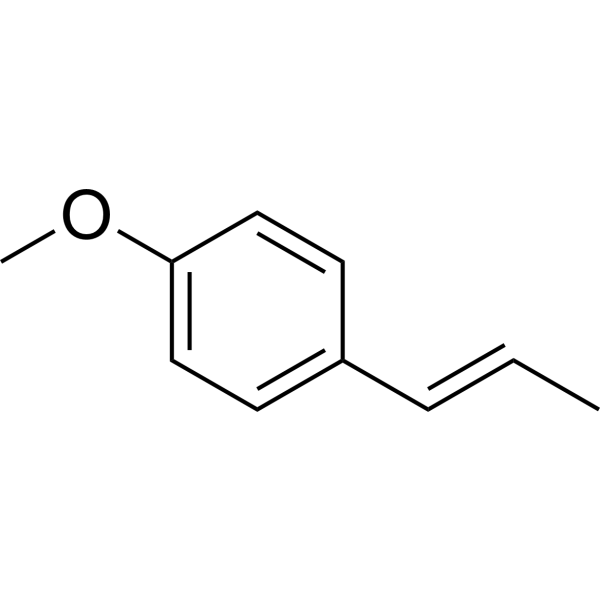
-
- HY-W015305
-
|
Octanoic acid ethyl ester
|
Biochemical Assay Reagents
|
Others
|
|
Ethyl octanoate is a class of esters consisting of the medium-chain fatty acid octanoic acid esterified with ethanol. The compound has a fruity smell and is commonly used as a flavoring in foods such as baked goods, candy and beverages. It can also be used as a fragrance ingredient in personal care products, and as a solvent or plasticizer in various industrial applications. In addition, Ethyl octanoate can be used as a starting material for the synthesis of other organic compounds.
|
-

-
- HY-W017567
-
|
trans-2-Hexenoic Acid Ethyl Ester
|
Biochemical Assay Reagents
|
Others
|
|
Ethyl (E)-2-hexenoate consists of a six-carbon chain with a double bond between the 2nd and 3rd carbon atoms, an ethyl ester group attached to the 1st carbon atom, and a A methyl group connected by 4 carbon atoms. This compound has a fruity, sweet or floral aroma and is commonly used as a flavoring in foods such as baked goods, confectionary and beverages.
|
-
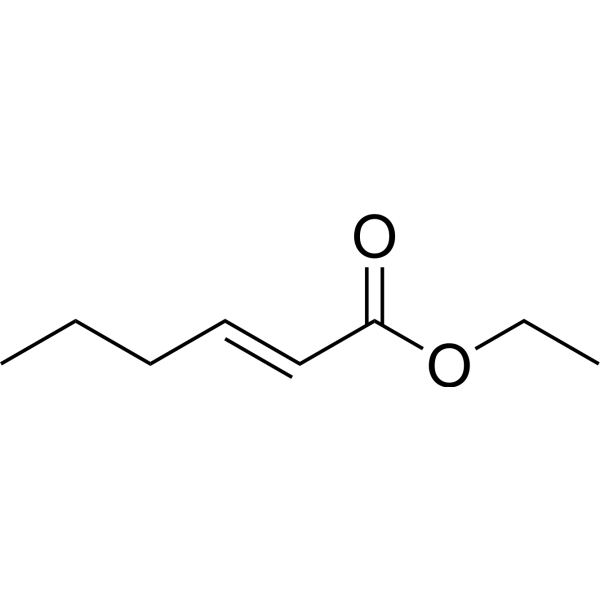
- HY-W099600
-
|
Bisdodecanoic anhydride
|
Biochemical Assay Reagents
|
Others
|
|
Lauric anhydride is a white waxy solid used as an intermediate in the production of various chemicals. It is primarily used in the synthesis of surfactants, emulsifiers, and lubricants, and as a raw material for other important industrial chemicals such as plasticizers and flavoring agents. It can be obtained from natural sources such as palm kernel oil and coconut oil, and its unique chemical structure allows it to be used to create compounds with specific surface and interfacial properties.
|
-

- HY-W114581
-
|
|
Biochemical Assay Reagents
|
Others
|
|
Ethyl2-hydroxy-4-methylpentanoate has a fruity odor and is commonly used as a flavoring agent in the food and beverage industry. In addition, it can be used as an intermediate in the synthesis of various organic compounds, including pharmaceuticals and agrochemicals. Its unique chemical properties make it an important ingredient in a variety of industrial processes, including the production of cosmetics and personal care products.
|
-
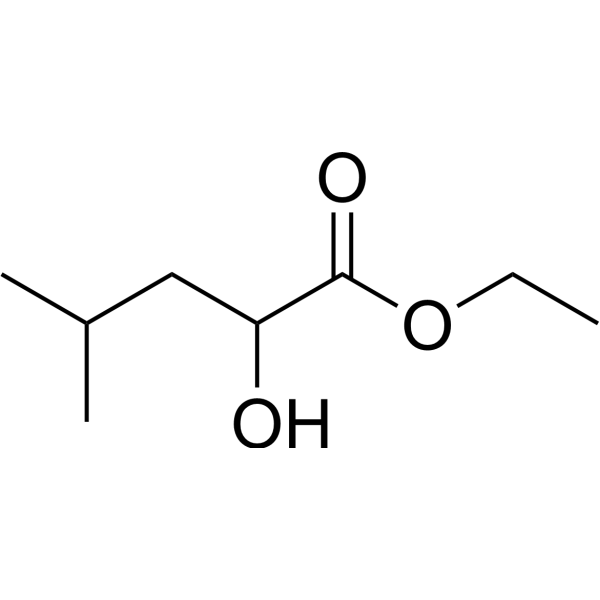
- HY-W236261
-
|
ATEE
|
Biochemical Assay Reagents
|
Others
|
|
N-Acetyl-L-tyrosine ethyl ester (ATEE) is a compound commonly used as a food flavoring and supplement. It is an ester of tyrosine, an amino acid found in many proteins. N-Acetyl-L-tyrosine ethyl ester is sweet, nutty and caramelized and is commonly used to enhance the flavor of baked goods, dairy products and beverages. Potential health benefits of N-Acetyl-L-tyrosine ethyl ester include its antioxidant properties and ability to improve cognitive function.
|
-
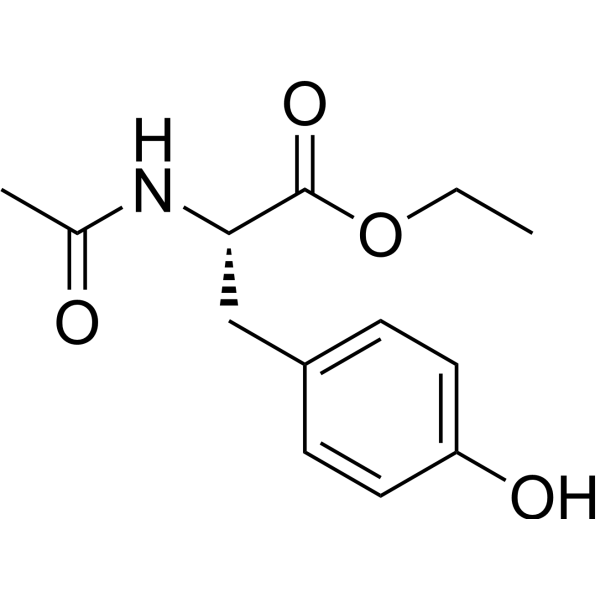
- HY-W013203
-
|
Icosanoic Acid Ethyl Ester
|
Biochemical Assay Reagents
|
Others
|
|
Ethyl icosanoate is an ester, which is formed by the esterification of long-chain straight-chain fatty acids, eicosanoic acid and ethanol. The compound has a fruity, waxy smell and is commonly used as a flavoring in foods such as baked goods, candy and beverages. It is also used as a fragrance ingredient in personal care products and as a lubricant or plasticizer in various industrial applications. In addition, Ethyl icosanoate can be used as a starting material for the synthesis of other organic compounds.
|
-

- HY-W014207
-
|
|
Biochemical Assay Reagents
|
Others
|
|
Ethyl undecanoate is a class of esters consisting of long-chain straight-chain fatty acids, undecanoic acid, esterified with ethanol. The compound has a fruity smell and is commonly used as a flavoring in foods such as baked goods, candy and beverages. It is also used as a fragrance ingredient in personal care products and as a lubricant or plasticizer in various industrial applications. In addition, Ethyl undecanoate can be used as a starting material for the synthesis of other organic compounds.
|
-
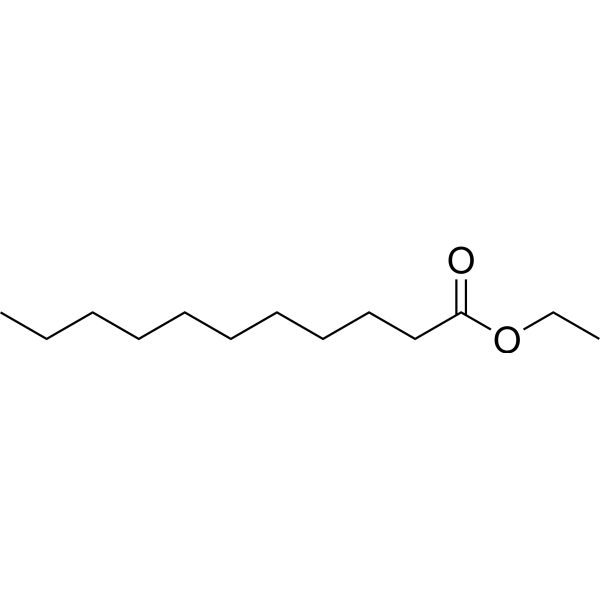
- HY-W014206
-
|
|
Biochemical Assay Reagents
|
Others
|
|
Isopentyl octanoate is a class of esters formed by the esterification of branched-chain isoamyl alcohol, also known as isoamyl alcohol, with octanoylate. The compound has a fruity smell and is commonly used as a flavoring in foods such as baked goods, candy and beverages. It can also be used as a fragrance ingredient in personal care products, and as a solvent or plasticizer in various industrial applications. In addition, Isopentyl octanoate can be used as a starting material for the synthesis of other organic compounds.
|
-
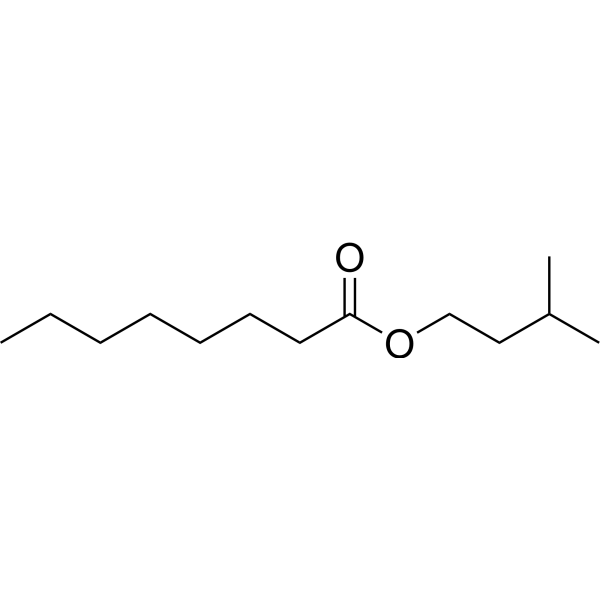
- HY-W076441
-
|
Ethyl (S)-3-hydroxybutyrate
|
Biochemical Assay Reagents
|
Others
|
|
Ethyl (S)-3-hydroxybutanoate, also known as (S)-ethyl lactate, which is an ester formed by the condensation of ethanol and (S)-3-hydroxybutanoate, is known for its fruity, sweet smell and taste , which are commonly used as flavoring agents and fragrances in the food and cosmetic industries, and in addition, its potential use as a starting material for the synthesis of various organic compounds, including pharmaceuticals and agrochemicals, has been investigated.
|
-
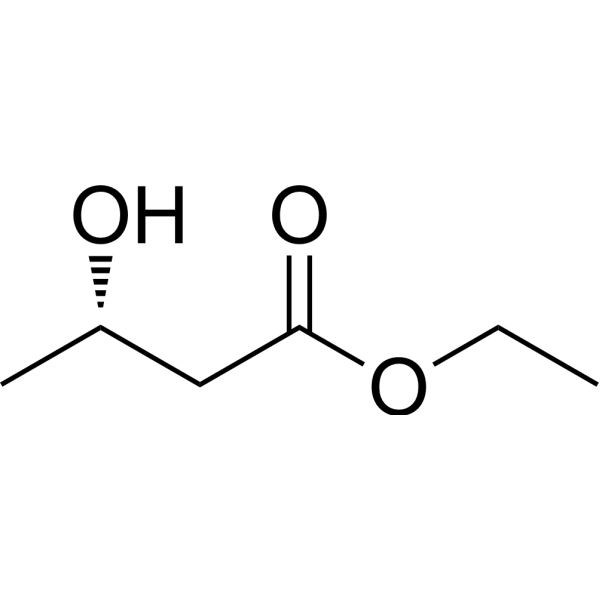
- HY-W015667
-
|
Ethyl 2-methylvalerate
|
Biochemical Assay Reagents
|
Others
|
|
Ethyl 2-methylpentanoate is a class of esters consisting of branched-chain isovaleric acid esterified with ethanol. The compound has a fruity, pungent smell and is commonly used as a flavoring in foods such as baked goods, dairy products and beverages. It can also be used as a fragrance ingredient in personal care products, and as a solvent or plasticizer in various industrial applications. In addition, Ethyl 2-methylpentanoate can be used as a starting material for the synthesis of other organic compounds.
|
-
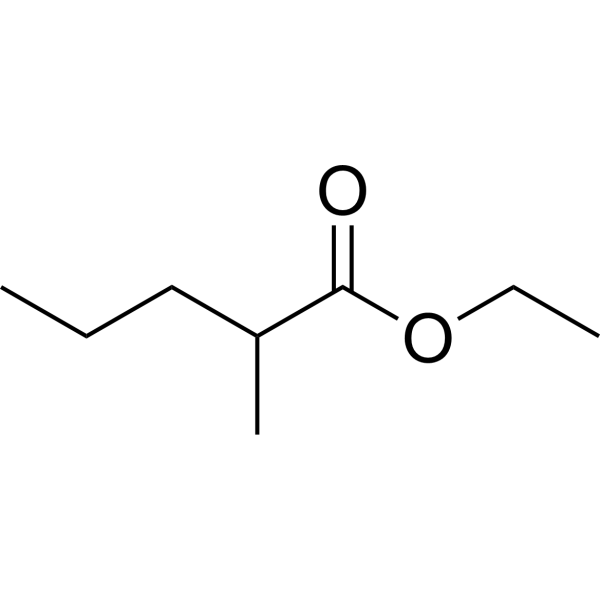
- HY-W099644
-
|
Ethyl erucate
|
Biochemical Assay Reagents
|
Others
|
|
Ethyl docos-13-enoate is a colorless or pale yellow liquid with a sweet floral aroma, used as a flavoring agent in the food industry and as a flavor enhancer in perfumes and colognes. It is also found in some vegetable oils and is used as a surfactant and emulsifier in personal care products. Ethyl docos-13-enoate is a versatile compound used in various industries due to its pleasant odor and ability to mix ingredients together.
|
-

- HY-Y0189S
-
|
Wintergreen oil-d4
|
COX
|
Inflammation/Immunology
|
|
Methyl Salicylate-d4 is the deuterium labeled Methyl Salicylate[1]. Methyl Salicylate (Wintergreen oil) is a topical analgesic and anti-inflammatory agent. Also used as a pesticide, a denaturant, a fragrance ingredient, and a flavoring agent in food and tobacco products[2]. A systemic acquired resistance (SAR) signal in tobacco[3]. A topical nonsteroidal anti-inflammatory agent (NSAID). Methyl salicylate lactoside is a COX inhibitor[5].
|
-
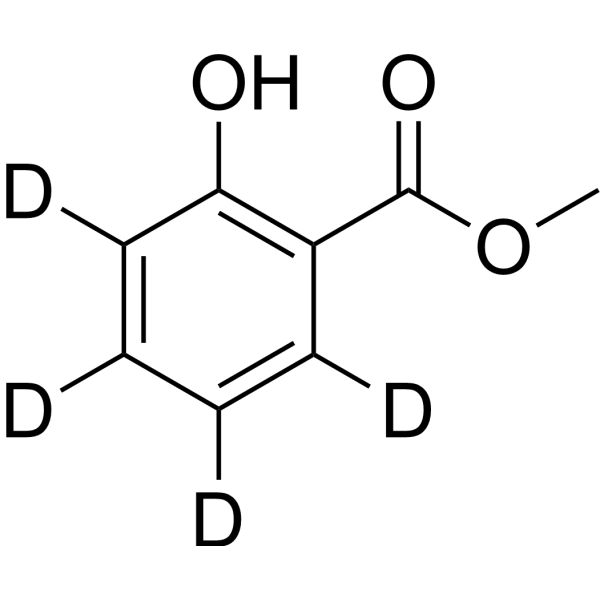
- HY-W012998S
-
|
|
Isotope-Labeled Compounds
|
Others
|
|
2,3-Pentanedione-d5 is the deuterium labeled 2,3-Pentanedione[1]. 2,3-Pentanedione is a common constituent of synthetic flavorings and is used to impart a butter, strawberry, caramel, fruit, rum, or cheese flavor in beverages, ice cream, candy, baked goods, gelatins, and puddings. 2,3-Pentanedione also occurs naturally as a fermentation product in beer, wine, and yogurt and is releasedduring roasting of coffee beans[2].
|
-
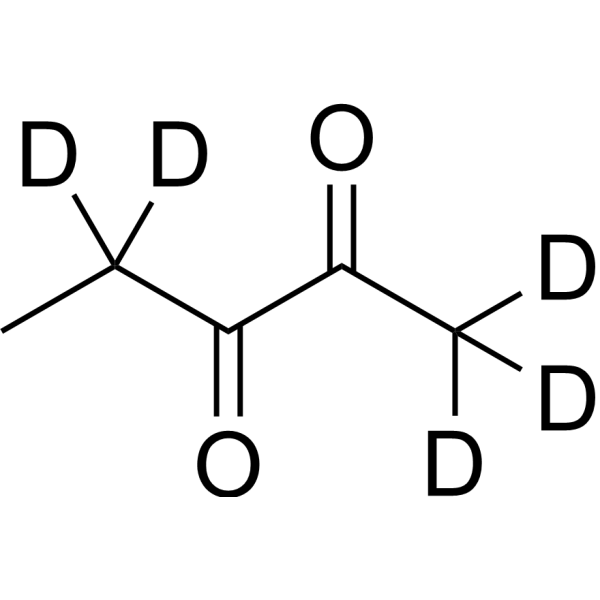
- HY-N0711
-
|
Cymophenol
|
Notch
Apoptosis
Fungal
Endogenous Metabolite
Bacterial
|
Infection
Inflammation/Immunology
Cancer
|
|
Carvacrol is an orally active monoterpenic phenol that can be extract from an abundant number of aromatic plants, including thyme and oregano, possessing antioxidant, antibacterial, antifungal, anticancer, anti-inflammatory, hepatoprotective, spasmolytic, and vasorelaxant properties. Carvacrol also causes cell cycle arrest in G0/G1, downregulates Notch-1, and Jagged-1, and induces apoptosis. Carvacrol is used in low concentrations as a food flavoring ingredient and preservative, as well as a fragrance ingredient in cosmetic formulations .
|
-
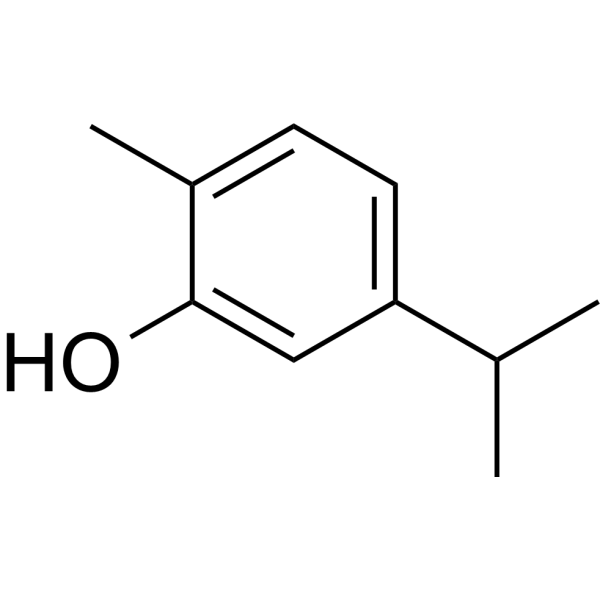
- HY-W010394
-
|
|
Biochemical Assay Reagents
|
Others
|
|
Methyl 3-oxopentanoate, which is also known as diethyl acetylmalonate or MEAM, Methyl 3-oxopentanoate is commonly used as a building block for the synthesis of various organic compounds, including pharmaceuticals, agrochemicals, and flavorings, and it can also Used as a reagent in organic chemical reactions, especially the formation of carbon-carbon bonds through malonate synthesis, the researchers also investigated the potential use of Methyl 3-oxopentanoate in the development of chiral auxiliaries that can aid in the selection of Controlling the stereochemistry of chemical reactions.
|
-
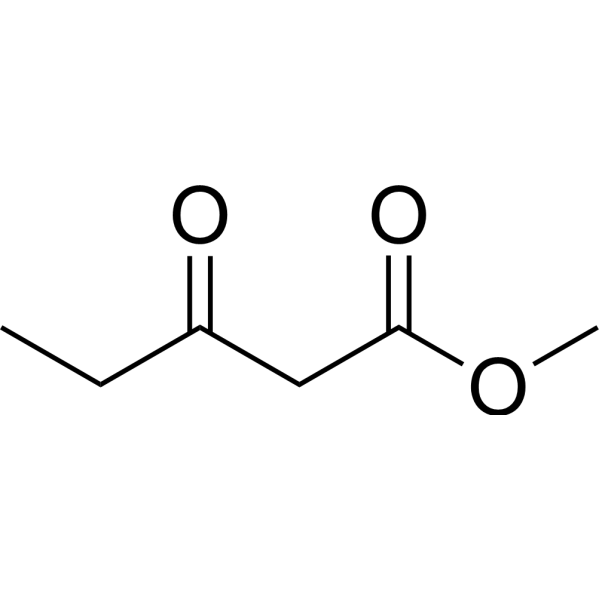
- HY-W010507
-
|
Methyl (R)-(-)-3-hydroxybutyrate
|
Biochemical Assay Reagents
|
Others
|
|
(R)-Methyl 3-hydroxybutanoate, (R)-Methyl 3-hydroxybutanoate is an enantiomer, from the perspective of the methyl (-CH3) group, the hydroxyl (-OH) group on the third carbon atom The group faces to the right, a colorless transparent liquid, soluble in organic solvents such as ethanol and ether, insoluble in water, (R)-Methyl 3-hydroxybutanoate is usually used to synthesize various organic compounds (including drugs, agricultural chemicals and flavoring agents) It can also be used as a chiral auxiliary in asymmetric synthetic reactions involving the formation of chemical bonds in a stereoselective manner.
|
-

- HY-W061674
-
|
(E)-Pent-2-enoic acid
|
Biochemical Assay Reagents
|
Others
|
|
(2E)-Pent-2-enoic acid is an unsaturated carboxylic acid, it is also known as 2-pentenoic acid or crotonic acid, the "2E" designation indicates that the molecule has a trans double bond configuration, where the double bond The two carbon atoms on both sides are located on opposite sides, (2E)-Pent-2-enoic acid has a pungent odor, is miscible with water and most organic solvents, it is commonly used in organic synthesis as a variety of chemical reactions, including esterification, oxidation, and reduction, and in addition, its potential use as a flavoring agent in the food industry was investigated.
|
-
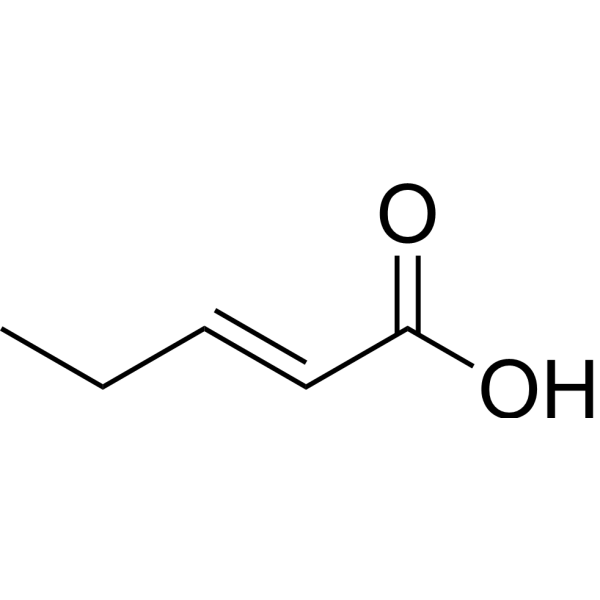
- HY-W015936
-
|
trans-Hex-2-en-1-ol
|
Biochemical Assay Reagents
|
Others
|
|
(E)-Hex-2-en-1-ol belongs to the class of unsaturated alcohols consisting of a six-carbon chain with a double bond between carbon atoms 2 and 3 and a hydroxyl group attached to carbon atom 1. The compound has a grassy or herbaceous smell and is commonly used as a flavoring in foods such as baked goods, candy and beverages. It can also be used as a fragrance ingredient in personal care products and as a starting material for the synthesis of other organic compounds. Furthermore, (E)-hex-2-en-1-ol can be used as a solvent or reagent in various chemical reactions.
|
-
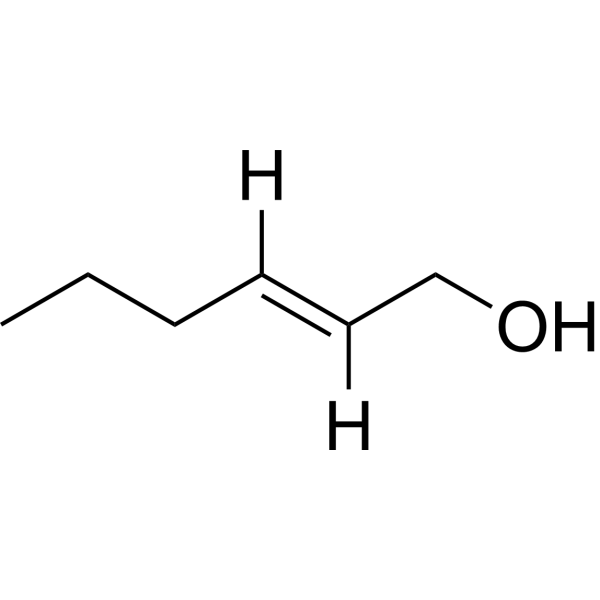
- HY-W115746
-
|
Ethyl cellulose N-200
|
Biochemical Assay Reagents
|
Others
|
|
Ethyl cellulose is a derivative of cellulose. Ethyl cellulose serves as a non-toxic and biodegradable polymer, with unique properties such as oleogel formation, delivery of active component, and film-forming ability in the food and pharmaceutical sectors. Ethyl cellulose can be used as an excipient, such as coating agent, flavoring agent, tablet filler. Pharmaceutical excipients, or pharmaceutical auxiliaries, refer to other chemical substances used in the pharmaceutical process other than pharmaceutical ingredients. Pharmaceutical excipients generally refer to inactive ingredients in pharmaceutical preparations, which can improve the stability, solubility and processability of pharmaceutical preparations. Pharmaceutical excipients also affect the absorption, distribution, metabolism, and elimination (ADME) processes of co-administered drugs .
|
-

| Cat. No. |
Product Name |
Type |
-
- HY-W016976
-
|
Prop-2-en-1-yl heptanoate
|
Biochemical Assay Reagents
|
|
Allyl heptanoate is an ester that is formed by the esterification of medium-chain fatty acids, heptanoic acid and allyl alcohol. The compound has a fruity smell and is commonly used as a flavoring in foods such as baked goods, candy and beverages.
|
-
- HY-W016172
-
|
|
Biochemical Assay Reagents
|
|
Methyl decanoate is a class of esters consisting of medium-chain fatty acids, capric acid, esterified with methanol. The compound has a fruity smell and is commonly used as a flavoring in foods such as baked goods, candy and beverages.
|
-
- HY-W022036
-
|
Guaethol; Guethol; NSC 180
|
Biochemical Assay Reagents
|
|
2-Ethoxyphenol, also known as guaiacol ethyl ether, consists of a phenolic ring and an ethoxy group connected to the 2-position. The compound has a sweet, smoky flavor and is commonly used as a flavoring in foods such as baked goods, candy and beverages.
|
-
- HY-141610
-
|
Methyl enanthate
|
Biochemical Assay Reagents
|
|
Methyl heptanoate, commonly used as a flavoring and fragrance ingredient in the food and cosmetic industries, Methyl heptanoate is also used as a solvent for various substances, including resins, oils and waxes, in addition, it has been studied for its potential as a biofuel and polymer production application.
|
-
- HY-W014884
-
|
Decanoic Acid Ethyl Ester
|
Biochemical Assay Reagents
|
|
Ethyl decanoate is an organic compound commonly used as a flavoring and food additive. It can be used to prepare flavors and food seasonings with various flavors, and is widely used in food, flavors and cosmetics. In addition, this compound is also used as a substrate or intermediate in some biochemical reactions.
|
-
- HY-W009684
-
|
Ethyl dodecanoate
|
Biochemical Assay Reagents
|
|
Ethyl Laurate is an organic compound commonly used as a flavoring and food additive. It can be used to make fruit, mint and sweet flavors, and is widely used in some food processing and cosmetic production. In addition, this compound is also used as a reagent and intermediate in some organic synthesis reactions.
|
-
- HY-W127330
-
|
|
Biochemical Assay Reagents
|
|
Butyl Laurate is an ester compound with a fruity odor commonly used as a flavoring agent in the food and beverage industry. In addition, it is used as a solvent, plasticizer or lubricant in various industrial applications. Its unique chemical properties make it an important ingredient in a variety of commercial products, including cosmetics, personal care products and cleaners.
|
-
- HY-W012995
-
|
|
Biochemical Assay Reagents
|
|
5-Hexen-1-ol, is an aromatic substance with aromas similar to substances such as herbs, tea and citrus. Therefore, it is usually used in the food, fragrance and perfume industries, and is widely used in the preparation of various food flavors, fragrances, taste flavoring agents, essential oils and cosmetics and other products.
|
-
- HY-W018829
-
|
Undecylenic Aldehyde
|
Biochemical Assay Reagents
|
|
10-Undecenal consists of an 11-carbon chain with a double bond between the 9th and 10th carbon atoms and an aldehyde group attached to the 1st carbon atom. This compound has a pungent or fatty smell and is commonly used as a flavoring commodity in foods such as bakery, confectionary and beverages.
|
-
- HY-W088501
-
|
|
Biochemical Assay Reagents
|
|
(E)-Pent-3-enoic acidIt is an unsaturated carboxylic acid. (E)-Pent-3-enoic acidAs a starting material for various chemical reactions including esterification, oxidation and reduction. (E)-Pent-3-enoic acidIt has potential use as a flavoring agent in the food industry.
|
-
- HY-W099750
-
|
Methyl Valerylacetate
|
Biochemical Assay Reagents
|
|
Methyl 3-oxoheptanoate is the methyl ester of the organic compound 3-oxoheptanoate. It has a fruity smell and taste. Methyl 3-oxoheptanoate is widely used as a flavoring agent and fragrance in the food and fragrance industry for its pleasant aroma. It is also used as an intermediate in the synthesis of other organic compounds such as pharmaceuticals, agrochemicals, and polymers.
|
-
- HY-W068214
-
|
Methyl-10-undecenoate
|
Biochemical Assay Reagents
|
|
Methyl undec-10-enoate, which is an ester formed by the condensation of methanol and undec-10-enoic acid, is commonly used as a flavoring and fragrance in the food and cosmetic industries due to its sweet fruity smell and taste , in addition, its potential use in biofuel production and as a starting material for the synthesis of various organic compounds was investigated.
|
-
- HY-W015308
-
|
Pelargonic acid methyl ester
|
Biochemical Assay Reagents
|
|
Methyl nonanoate is an ester compound obtained by the reaction of methanol and nonanoic acid. It has a fruity aroma and is commonly used as a flavoring agent in a variety of foods such as baked goods, confectionary and beverages. Methyl nonanoate is also used as a fragrance ingredient in the manufacture of perfume, cologne and personal care products. Furthermore, it has applications in industrial settings, for example in the production of solvents, resins and plasticizers.
|
-
- HY-W068700
-
|
|
Biochemical Assay Reagents
|
|
Methyl sorbate, which is an ester formed by the condensation of methanol and hexa-2,4-dienoic acid, is commonly used as a flavoring agent and fragrance in the food and cosmetic industries due to its fruity, floral, and taste, and in addition , it has also been investigated for its potential use as a starting material in the synthesis of various organic compounds, including pharmaceuticals, agrochemicals, and polymers.
|
-
- HY-D0850
-
|
Sodium tartrate dibasic dihydrate; Sodium tartrate dihydrate
|
Biochemical Assay Reagents
|
|
Tartaric acid disodium dehydrate (L-(+) -tartaric acid) is an orally active weak organic acid that can be isolated from grapes. Tartaric acid disodium dehydrate has vasodilatory and antihypertensive effects. Tartaric acid disodium dehydrate can be used as flavorings and antioxidants in a range of foods and beverages. Tartaric acid disodium dehydrate can be used in laser frequency doubling and optical limiting applications .
|
-
- HY-W109973
-
|
L-(+)-Tartaric acid diammonium
|
Biochemical Assay Reagents
|
|
L-Tartaric acid diammonium (L-(+) -tartaric acid) is an orally active weak organic acid that can be isolated from grapes. L-Tartaric acid diammonium has vasodilatory and antihypertensive effects. L-Tartaric acid diammonium can be used as flavorings and antioxidants in a range of foods and beverages. L-Tartaric acid diammonium can be used in laser frequency doubling and optical limiting applications .
|
-
- HY-W015305
-
|
Octanoic acid ethyl ester
|
Biochemical Assay Reagents
|
|
Ethyl octanoate is a class of esters consisting of the medium-chain fatty acid octanoic acid esterified with ethanol. The compound has a fruity smell and is commonly used as a flavoring in foods such as baked goods, candy and beverages. It can also be used as a fragrance ingredient in personal care products, and as a solvent or plasticizer in various industrial applications. In addition, Ethyl octanoate can be used as a starting material for the synthesis of other organic compounds.
|
-
- HY-W017567
-
|
trans-2-Hexenoic Acid Ethyl Ester
|
Biochemical Assay Reagents
|
|
Ethyl (E)-2-hexenoate consists of a six-carbon chain with a double bond between the 2nd and 3rd carbon atoms, an ethyl ester group attached to the 1st carbon atom, and a A methyl group connected by 4 carbon atoms. This compound has a fruity, sweet or floral aroma and is commonly used as a flavoring in foods such as baked goods, confectionary and beverages.
|
-
- HY-W099600
-
|
Bisdodecanoic anhydride
|
Biochemical Assay Reagents
|
|
Lauric anhydride is a white waxy solid used as an intermediate in the production of various chemicals. It is primarily used in the synthesis of surfactants, emulsifiers, and lubricants, and as a raw material for other important industrial chemicals such as plasticizers and flavoring agents. It can be obtained from natural sources such as palm kernel oil and coconut oil, and its unique chemical structure allows it to be used to create compounds with specific surface and interfacial properties.
|
-
- HY-W114581
-
|
|
Biochemical Assay Reagents
|
|
Ethyl2-hydroxy-4-methylpentanoate has a fruity odor and is commonly used as a flavoring agent in the food and beverage industry. In addition, it can be used as an intermediate in the synthesis of various organic compounds, including pharmaceuticals and agrochemicals. Its unique chemical properties make it an important ingredient in a variety of industrial processes, including the production of cosmetics and personal care products.
|
-
- HY-W236261
-
|
ATEE
|
Biochemical Assay Reagents
|
|
N-Acetyl-L-tyrosine ethyl ester (ATEE) is a compound commonly used as a food flavoring and supplement. It is an ester of tyrosine, an amino acid found in many proteins. N-Acetyl-L-tyrosine ethyl ester is sweet, nutty and caramelized and is commonly used to enhance the flavor of baked goods, dairy products and beverages. Potential health benefits of N-Acetyl-L-tyrosine ethyl ester include its antioxidant properties and ability to improve cognitive function.
|
-
- HY-W013203
-
|
Icosanoic Acid Ethyl Ester
|
Biochemical Assay Reagents
|
|
Ethyl icosanoate is an ester, which is formed by the esterification of long-chain straight-chain fatty acids, eicosanoic acid and ethanol. The compound has a fruity, waxy smell and is commonly used as a flavoring in foods such as baked goods, candy and beverages. It is also used as a fragrance ingredient in personal care products and as a lubricant or plasticizer in various industrial applications. In addition, Ethyl icosanoate can be used as a starting material for the synthesis of other organic compounds.
|
-
- HY-W014207
-
|
|
Biochemical Assay Reagents
|
|
Ethyl undecanoate is a class of esters consisting of long-chain straight-chain fatty acids, undecanoic acid, esterified with ethanol. The compound has a fruity smell and is commonly used as a flavoring in foods such as baked goods, candy and beverages. It is also used as a fragrance ingredient in personal care products and as a lubricant or plasticizer in various industrial applications. In addition, Ethyl undecanoate can be used as a starting material for the synthesis of other organic compounds.
|
-
- HY-W014206
-
|
|
Biochemical Assay Reagents
|
|
Isopentyl octanoate is a class of esters formed by the esterification of branched-chain isoamyl alcohol, also known as isoamyl alcohol, with octanoylate. The compound has a fruity smell and is commonly used as a flavoring in foods such as baked goods, candy and beverages. It can also be used as a fragrance ingredient in personal care products, and as a solvent or plasticizer in various industrial applications. In addition, Isopentyl octanoate can be used as a starting material for the synthesis of other organic compounds.
|
-
- HY-W076441
-
|
Ethyl (S)-3-hydroxybutyrate
|
Biochemical Assay Reagents
|
|
Ethyl (S)-3-hydroxybutanoate, also known as (S)-ethyl lactate, which is an ester formed by the condensation of ethanol and (S)-3-hydroxybutanoate, is known for its fruity, sweet smell and taste , which are commonly used as flavoring agents and fragrances in the food and cosmetic industries, and in addition, its potential use as a starting material for the synthesis of various organic compounds, including pharmaceuticals and agrochemicals, has been investigated.
|
-
- HY-W015667
-
|
Ethyl 2-methylvalerate
|
Biochemical Assay Reagents
|
|
Ethyl 2-methylpentanoate is a class of esters consisting of branched-chain isovaleric acid esterified with ethanol. The compound has a fruity, pungent smell and is commonly used as a flavoring in foods such as baked goods, dairy products and beverages. It can also be used as a fragrance ingredient in personal care products, and as a solvent or plasticizer in various industrial applications. In addition, Ethyl 2-methylpentanoate can be used as a starting material for the synthesis of other organic compounds.
|
-
- HY-W099644
-
|
Ethyl erucate
|
Biochemical Assay Reagents
|
|
Ethyl docos-13-enoate is a colorless or pale yellow liquid with a sweet floral aroma, used as a flavoring agent in the food industry and as a flavor enhancer in perfumes and colognes. It is also found in some vegetable oils and is used as a surfactant and emulsifier in personal care products. Ethyl docos-13-enoate is a versatile compound used in various industries due to its pleasant odor and ability to mix ingredients together.
|
-
- HY-W010394
-
|
|
Biochemical Assay Reagents
|
|
Methyl 3-oxopentanoate, which is also known as diethyl acetylmalonate or MEAM, Methyl 3-oxopentanoate is commonly used as a building block for the synthesis of various organic compounds, including pharmaceuticals, agrochemicals, and flavorings, and it can also Used as a reagent in organic chemical reactions, especially the formation of carbon-carbon bonds through malonate synthesis, the researchers also investigated the potential use of Methyl 3-oxopentanoate in the development of chiral auxiliaries that can aid in the selection of Controlling the stereochemistry of chemical reactions.
|
-
- HY-W010507
-
|
Methyl (R)-(-)-3-hydroxybutyrate
|
Biochemical Assay Reagents
|
|
(R)-Methyl 3-hydroxybutanoate, (R)-Methyl 3-hydroxybutanoate is an enantiomer, from the perspective of the methyl (-CH3) group, the hydroxyl (-OH) group on the third carbon atom The group faces to the right, a colorless transparent liquid, soluble in organic solvents such as ethanol and ether, insoluble in water, (R)-Methyl 3-hydroxybutanoate is usually used to synthesize various organic compounds (including drugs, agricultural chemicals and flavoring agents) It can also be used as a chiral auxiliary in asymmetric synthetic reactions involving the formation of chemical bonds in a stereoselective manner.
|
-
- HY-W061674
-
|
(E)-Pent-2-enoic acid
|
Biochemical Assay Reagents
|
|
(2E)-Pent-2-enoic acid is an unsaturated carboxylic acid, it is also known as 2-pentenoic acid or crotonic acid, the "2E" designation indicates that the molecule has a trans double bond configuration, where the double bond The two carbon atoms on both sides are located on opposite sides, (2E)-Pent-2-enoic acid has a pungent odor, is miscible with water and most organic solvents, it is commonly used in organic synthesis as a variety of chemical reactions, including esterification, oxidation, and reduction, and in addition, its potential use as a flavoring agent in the food industry was investigated.
|
-
- HY-W015936
-
|
trans-Hex-2-en-1-ol
|
Biochemical Assay Reagents
|
|
(E)-Hex-2-en-1-ol belongs to the class of unsaturated alcohols consisting of a six-carbon chain with a double bond between carbon atoms 2 and 3 and a hydroxyl group attached to carbon atom 1. The compound has a grassy or herbaceous smell and is commonly used as a flavoring in foods such as baked goods, candy and beverages. It can also be used as a fragrance ingredient in personal care products and as a starting material for the synthesis of other organic compounds. Furthermore, (E)-hex-2-en-1-ol can be used as a solvent or reagent in various chemical reactions.
|
| Cat. No. |
Product Name |
Category |
Target |
Chemical Structure |
-
- HY-W012835
-
-

-
- HY-108943
-
-

-
- HY-W020014
-
-

-
- HY-B0940
-
-

-
- HY-N2067
-
-

-
- HY-B1431
-
-

-
- HY-N1426
-
-

-
- HY-W015307
-
-

-
- HY-B0940R
-
|
|
Microorganisms
Source classification
|
Others
|
|
Ethylvanillin (Standard) is the analytical standard of Ethylvanillin. This product is intended for research and analytical applications. Ethylvanillin is a flavoring that is three times more potent than Vanillin and is used in the production of chocolate.
|
-

-
- HY-N0708
-
-

-
- HY-W009708
-
-

-
- HY-N0420
-
-

-
- HY-Y0189
-
-

-
- HY-W012998
-
|
|
other families
Microorganisms
Classification of Application Fields
Ketones, Aldehydes, Acids
Source classification
Other Diseases
Plants
Disease Research Fields
|
Others
|
|
2,3-Pentanedione is a common constituent of synthetic flavorings and is used to impart a butter, strawberry, caramel, fruit, rum, or cheese flavor in beverages, ice cream, candy, baked goods, gelatins, and puddings. 2,3-Pentanedione also occurs naturally as a fermentation product in beer, wine, and yogurt and is releasedduring roasting of coffee beans .
|
-

-
- HY-W015308
-
-

-
- HY-D0850
-
-

-
- HY-W015410
-
-

-
- HY-W109973
-
-

-
- HY-B0900
-
|
Anise camphor; p-Propenylanisole; Isoestragole
|
Structural Classification
Classification of Application Fields
Callicarpa maingayi King & Gamble
Source classification
Plants
Microorganisms
Simple Phenylpropanols
Leguminosae
Phenylpropanoids
Umbelliferae
Glycyrrhiza uralensis Fisch.
Disease Research Fields
Cancer
|
Apoptosis
Fungal
Bacterial
MMP
NF-κB
|
|
Anethole is a type of orally active aromatic compound that is widely found in nature and used as a flavoring agent. Anethole possesses anticancer, anti-inflammatory, antioxidant, antibacterial, antifungal, anesthetic, estrogenic, central nervous system depressant, hypnotic, insecticidal, and gastroprotective effects. Anethole can be used in the study of oxidative stress-related skin diseases and prostate cancer .
|
-

-
- HY-N0711
-
|
Cymophenol
|
Structural Classification
Monophenols
Preservatives
Classification of Application Fields
Labiatae
Phenols
Plants
Inflammation/Immunology
Disease Research Fields
Food Research
|
Notch
Apoptosis
Fungal
Endogenous Metabolite
Bacterial
|
|
Carvacrol is an orally active monoterpenic phenol that can be extract from an abundant number of aromatic plants, including thyme and oregano, possessing antioxidant, antibacterial, antifungal, anticancer, anti-inflammatory, hepatoprotective, spasmolytic, and vasorelaxant properties. Carvacrol also causes cell cycle arrest in G0/G1, downregulates Notch-1, and Jagged-1, and induces apoptosis. Carvacrol is used in low concentrations as a food flavoring ingredient and preservative, as well as a fragrance ingredient in cosmetic formulations .
|
-

| Cat. No. |
Product Name |
Chemical Structure |
-
- HY-Y0836S
-
|
|
|
Diethyl succinate- 13C4 is the 13C labeled Diethyl succinate[1]. Diethyl succinate (Diethyl Butanedioate) is used at physiological pH and crosses biological membranes, incorporates into cells in tissue culture and is metabolized by the TCA cycle. Diethyl succinate is known to be non-toxic and used in fragrances and flavoring[2].
|
-

-
- HY-B1431S
-
|
|
|
Butylparaben-d4 is the deuterium labeled Butylparaben. Butylparaben is an organic compound, has proven to be a highly successful antimicrobial preservative in cosmetics, also used in medication suspensions, and as a flavoring additive in food.
|
-

-
- HY-Y0836S1
-
|
|
|
Diethyl succinate-d4 is the deuterium labeled Diethyl succinate[1]. Diethyl succinate (Diethyl Butanedioate) is used at physiological pH and crosses biological membranes, incorporates into cells in tissue culture and is metabolized by the TCA cycle. Diethyl succinate is known to be non-toxic and used in fragrances and flavoring[2].
|
-

-
- HY-B1431S1
-
|
|
|
Butylparaben- 13C6 is the 13C labeled Butylparaben[1]. Butylparaben is an organic compound, has proven to be a highly successful antimicrobial preservative in cosmetics, also used in medication suspensions, and as a flavoring additive in food.
|
-

-
- HY-W012835S2
-
|
|
|
4-Methylanisole- 13C is the 13C-labeled 4-Methylanisole. 4-Methylanisole (4-Methoxytoluene) is food flavoring agent and can be naturally found in Ylang Ylang fragrance oil[1].
|
-

-
- HY-W012835S
-
|
|
|
4-Methylanisole-d4 is the deuterium labeled 4-Methylanisole[1]. 4-Methylanisole (4-Methoxytoluene) is food flavoring agent and can be naturally found in Ylang Ylang fragrance oil[2].
|
-

-
- HY-W012835S1
-
|
|
|
4-Methylanisole-d3 is the deuterium labeled 4-Methylanisole[1]. 4-Methylanisole (4-Methoxytoluene) is food flavoring agent and can be naturally found in Ylang Ylang fragrance oil[2].
|
-

-
- HY-W012835S3
-
|
|
|
4-Methylanisole-d7 is the deuterium labeled 4-Methylanisole[1]. 4-Methylanisole (4-Methoxytoluene) is food flavoring agent and can be naturally found in Ylang Ylang fragrance oil[2].
|
-

-
- HY-W012835S4
-
|
|
|
4-Methylanisole-d7-1 is the deuterium labeled 4-Methylanisole[1]. 4-Methylanisole (4-Methoxytoluene) is food flavoring agent and can be naturally found in Ylang Ylang fragrance oil[2].
|
-

-
- HY-Y0189S
-
|
|
|
Methyl Salicylate-d4 is the deuterium labeled Methyl Salicylate[1]. Methyl Salicylate (Wintergreen oil) is a topical analgesic and anti-inflammatory agent. Also used as a pesticide, a denaturant, a fragrance ingredient, and a flavoring agent in food and tobacco products[2]. A systemic acquired resistance (SAR) signal in tobacco[3]. A topical nonsteroidal anti-inflammatory agent (NSAID). Methyl salicylate lactoside is a COX inhibitor[5].
|
-

-
- HY-W012998S
-
|
|
|
2,3-Pentanedione-d5 is the deuterium labeled 2,3-Pentanedione[1]. 2,3-Pentanedione is a common constituent of synthetic flavorings and is used to impart a butter, strawberry, caramel, fruit, rum, or cheese flavor in beverages, ice cream, candy, baked goods, gelatins, and puddings. 2,3-Pentanedione also occurs naturally as a fermentation product in beer, wine, and yogurt and is releasedduring roasting of coffee beans[2].
|
-

Your information is safe with us. * Required Fields.
Inquiry Information
- Product Name:
- Cat. No.:
- Quantity:
- MCE Japan Authorized Agent:











































































